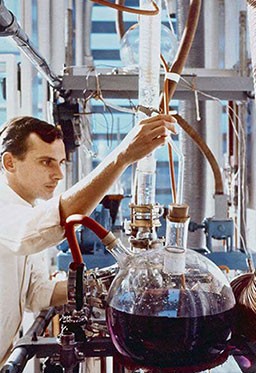Like many great innovations, insulin started with a crazy idea. It was the summer of 1921, and a Canadian doctor and medical practitioner, Frederick Banting, theorized that not only would a pancreatic hormone reverse the effects of diabetes, but it could be extracted from the organ to be injected into the bodies of those who suffered from the disease.
Together with his research assistant, Charles Best, a medical student, and Dr. James Collip, Banting set out to prove his theory. By isolating and extracting the pancreatic hormone and injecting it into animals that suffered from diabetes, Banting proved that using this “insulin” lowered blood sugar levels.
100 years after the discovery of insulin, we are looking
ahead to the next 100 years of type 2 diabetes research. Together
with the University of Toronto, we have established the Novo
Nordisk Network for Healthy Populations . The
network will unite experts in public health and chronic disease
research to focus on uncovering new prevention tactics to halt
the rise of type 2 diabetes.
This interdisciplinary effort will explore critical questions related to chronic diseases such as how transportation, mobilities, and the built environment are key enablers of health and well-being. The role of new technologies including virtual care, remote training and support, and wearable devices in diabetes care and obesity prevention will also be explored.
Insulin 100 Heritage Minute by Historica Canada: In recognition of the discovery of insulin 100 years ago in Canada.
